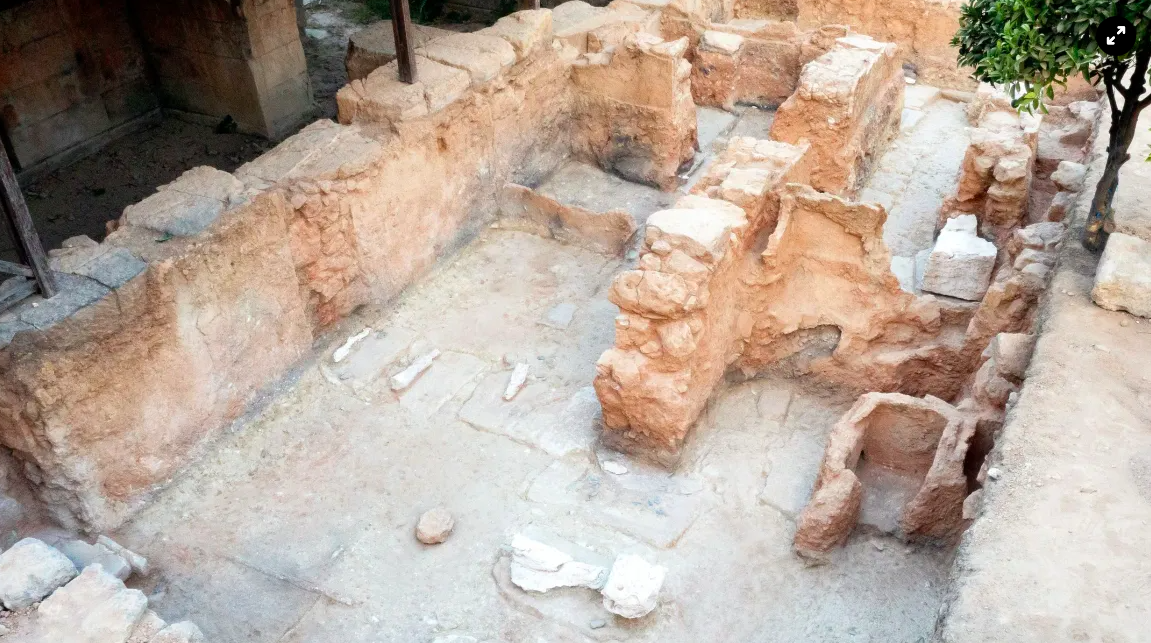Since the beginning of July, archaeologist Efi Sapouna-Sakellarakis has resumed excavations at the Minoan palace in Archanes, investigating the 1900 BC complex, one of Crete’s most important archaeological sites.
This year marks the second year of Efi Sapouna-Sakellarakis’ “return” to Archanes, focusing on the northern extension of the palace, particularly the storage areas that housed large jars containing oil, fruits, and textiles. The new archaeological research aims to complete the picture of the three-story building, believed to be the work of a brilliant architect. Specifically, the central courtyard, extending in front of the impressive altar and one of the main entrances, is being investigated.

In 1999, Yiannis and Efi Sakellarakis worked on excavating the Archanes palace, which was first discovered in 1963 by the late archaeologist Giannis Sakellarakis. He also excavated other significant sites on the island, uncovering impressive findings now displayed in the Archaeological Museum of Heraklion.
Located in the center of modern-day Archanes in the so-called Turkogeitonia, the palace was destroyed by an earthquake around 1700 BC, rebuilt, and flourished until its final destruction in 1450 BC. Subsequent excavations revealed that Mycenaeans later settled there, and the site was inhabited during the Geometric, Archaic, Roman, and Turkish periods.

Arthur Evans was the first to search for the palace, driven by significant local finds and the belief that it might be the “summer palace of Knossos” based on Victorian notions of the time. Excavations by Giannis and Efi Sakellarakis revealed a luxurious palace, possibly belonging to a scion of the Knossos dynasty, with solid walls, bright stucco details, frescoes, numerous altars, and precious objects.
Among the discoveries were ivory figurines in one of the palace’s 35 rooms and the famous abode of Archanes. Additionally, the palace’s Archives and theater area were located nearby.

To preserve this significant find from modern construction, the excavators, with the help of the Psychas Foundation, purchased neighboring plots and houses early on to prevent the inconvenience of expropriation for residents. These properties were donated to the Greek State.
The same approach was taken for the royal cemetery in Fourni Archanon, with the Psychas Foundation purchasing the hill and donating it to the public. In Fourni, Yiannis and Efi Sakellaraki uncovered the most impressive Minoan cemetery in Crete, featuring five vaulted tombs, large burial buildings, and a unique priest’s residence. Numerous gold gifts were discovered, the most notable being the well-known “Ring of Archanes,” depicting a worship scene, along with ivory furniture, bronze vessels, ivory seals, semi-precious stones, and Cycladic figurines, indicating settlement by Cycladic settlers in this affluent area of Crete.
Recently, the Region of Crete allocated a significant amount through NSRF for the development, maintenance, and safe entry of visitors to the cemetery, creating another accessible archaeological site in the area.
Archanes has gained worldwide recognition through the scientific publications of Yiannis and Efi Sakellarakis in Greek and international press, films (ZDF, National Geographic, etc.), covering the palace, the cemetery in Fourni, and the human sacrifice temple at Wind Caves. The excavation at Archanes is under the auspices of the Archaeological Society.
Ask me anything
Explore related questions





